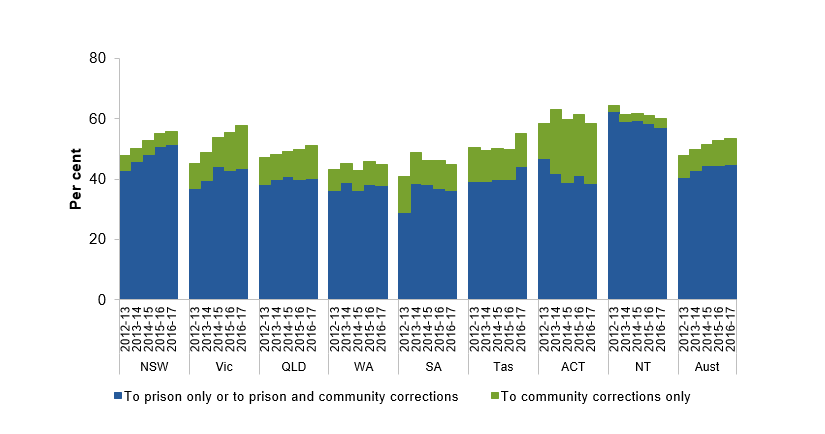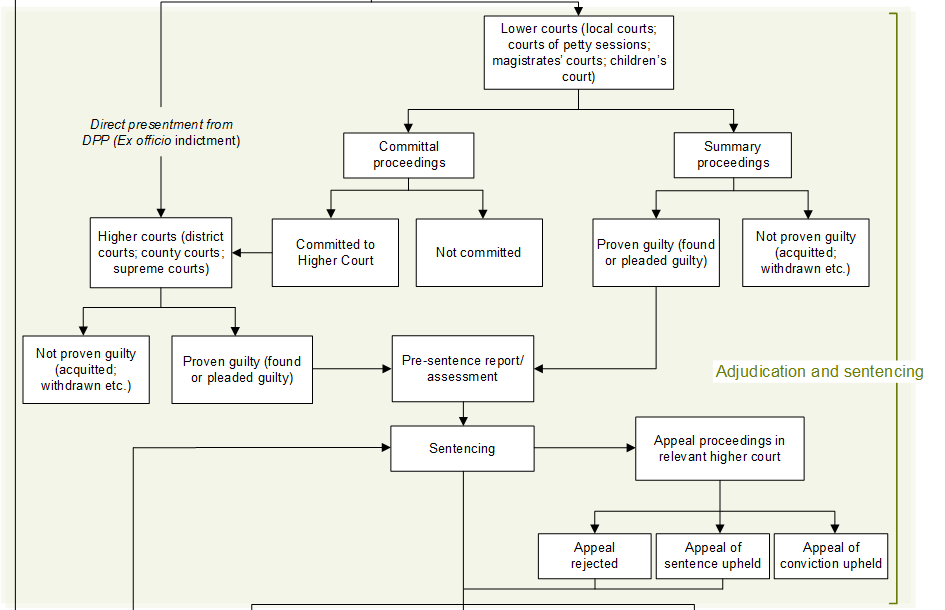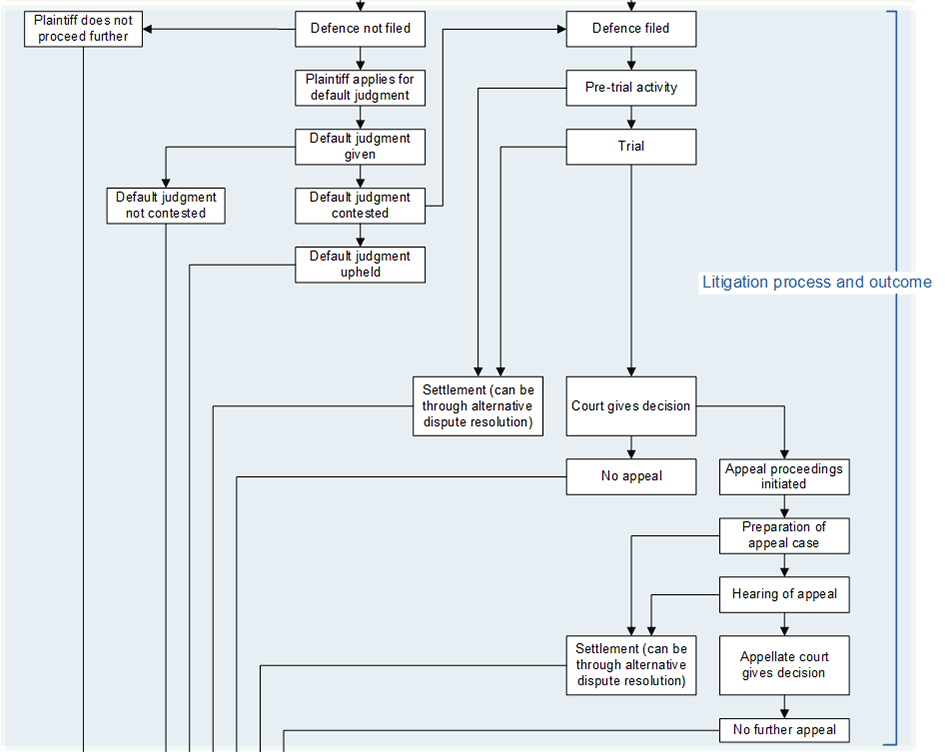Report on Government Services 2018
PART C: RELEASED ON 25 JANUARY 2018
Justice
Main aims of services within the sector
The justice sector services aim to contribute to a safe and secure community and promote a law abiding way of life.
Services included in the sector
- Police services
Deliver services relating to preserving public order, investigating crime and apprehending offenders, improving road safety and supporting the judicial process. - Courts
Arbitrate on criminal and civil justice matters. This Report focuses on administrative support functions for the courts, such as management of court facilities, services and staffing and the provision of case management services. Judicial decisions and outcomes are not included. - Corrective services
Administer correctional sanctions imposed by courts and orders of the adult parole boards through the management of adult custodial facilities and community corrections orders, and the provision of programs and services to prisoners and offenders. - Legal aid, public prosecutions and tribunals are not included as service-specific chapters in this Report. Justice services for children and young offenders (predominately related to youth community corrections and detention) are covered under youth justice in chapter 17 of the Report.
Detailed information on the equity, effectiveness and efficiency of service provision and the achievement of outcomes for the Police, Courts and Corrective service areas is contained in the service-specific chapters.
Note: Attachment tables are referenced by table xA.1, xA.2, etc, with x referring to the chapter or overview. For example, table CA.1 refers to attachment table 1 for this sector overview.
Government expenditure in the sector
Total government expenditure for the justice services in this Report (less revenue from own sources) was almost $16.1 billion in 2016-17 (table CA.1), around 7.2 per cent of total government expenditure on services covered in this Report. Police services was the largest contributor (65.4 per cent), followed by corrective services (25.3 per cent) and courts (9.3 per cent). Nationally, expenditure per person on justice services was $660 in 2016-17 (table CA.2).
Flows in the sector
For criminal matters which come to the attention of authorities, the typical flow of events is investigation by police and, if charges are laid, adjudication by courts with subsequent sentencing if applicable and possible entry into corrective services (adult prison, youth justice or community corrections orders). The roles of police, courts and corrective services, and the sequencing of their involvement, are shown in figure C.1.
Figure C.1 Flows through the criminal justice systema, b, c

[ Investigation and charging ]
[ Adjudication and sentencing ]
[ Managing offenders ]
a Does not account for all variations across Australian, State and Territory governments’ criminal justice systems. b The flow diagram is indicative and does not include all complexities of the criminal justice system. c Ex officio indictment refers to a decision by the Director of Public Prosecutions (DPP) to commence criminal proceedings in a higher court without a committal hearing, or where a committal hearing did not result in a case being committed to trial in a higher court.
Figure C.2 is an indicative model of the flows through the civil justice system. While the emphasis is on the flow of disputes which proceed to court, the role of alternative dispute resolution processes is considerable in civil justice in part as it is more available as an early alternative to court adjudication.
Figure C.2 Flows through the civil justice systema, b
a Does not account for all variations across Australian, State and Territory governments’ civil justice systems. b The flow diagram is indicative and does not include all complexities of the civil justice system.
Sector-wide indicators
One sector-wide proxy indicator of governments’ aim to contribute to a safe and secure community and promote a law abiding way of life is reported.
Re-offending rates
Re-offending rates show the extent to which people who have had contact with the criminal justice system are re-arrested or return to corrective services (either prison or community corrections). Low or decreasing rates of re-offending may indicate a safer and more secure community environment and the promotion of a more law abiding way of life – however higher rates may also indicate more effective policing and detection of offences.
Re-offending rates is a proxy indicator as it only reflects those people whose re-offending has come to the attention of authorities (some offences may go undetected by, or unreported to, police). The restricted time frames for measuring re-offending (one year for police proceedings and two years for return to corrective services) will also underestimate the proportions of offenders who have repeat contact with the criminal justice system beyond those time frames.
Re-offending is measured by:
- the proportion of people aged 10 years or over who were proceeded against more than once by police during the year
- the proportion of adults released from prison after serving a sentence who returned to corrective services (either prison or community corrections) with a new correctional sanction within two years
- the proportion of adults discharged from community corrections orders who returned to corrective services (either prison or community corrections) with a new correctional sanction within two years.
People proceeded against by police
In each State and Territory (except WA for whom data were not available), of people aged 10 years or over proceeded against by police in 2015-16, one-third or less were proceeded against more than once during the year (table CA.3). The data represent each separate occasion that police initiated a legal action against a person. Depending on the type of offence committed, police will either initiate a court action (laying of charges to be answered in court) or non-court action (don’t require a court appearance, for example warnings and penalty notices).
Adult offenders released from prison
In 2016-17, 44.8 per cent of prisoners released in 2014-15 returned to prison within two years and 53.4 per cent returned to corrective services (prison or community corrections). Nationally, these rates have increased over the last five years (figure C.3).
Adult offenders discharged from community corrections orders
In 2016-17, 15.9 per cent of adults discharged during 2014-15 after serving orders administered by community corrections returned to community corrections within two years, and 25.3 per cent returned to corrective services (prison or community corrections) (table CA.5).
Figure C.3 Prisoners returned to corrective services with a new correctional sanction within two years of release (per cent)a, b

a See table CA.4 for detailed footnotes and caveats. b Rates for a financial year relate to prisoners released two years prior to that reporting period who returned within two years of their release date.
Source: State and Territory governments (unpublished); table CA.4.
Download attachment tables
These attachment tables relate to the sector as a whole. Data specific to individual service areas are in the attachment tables under the relevant service area.





